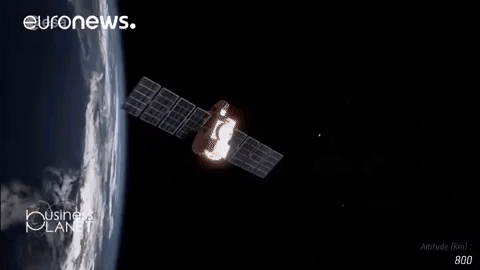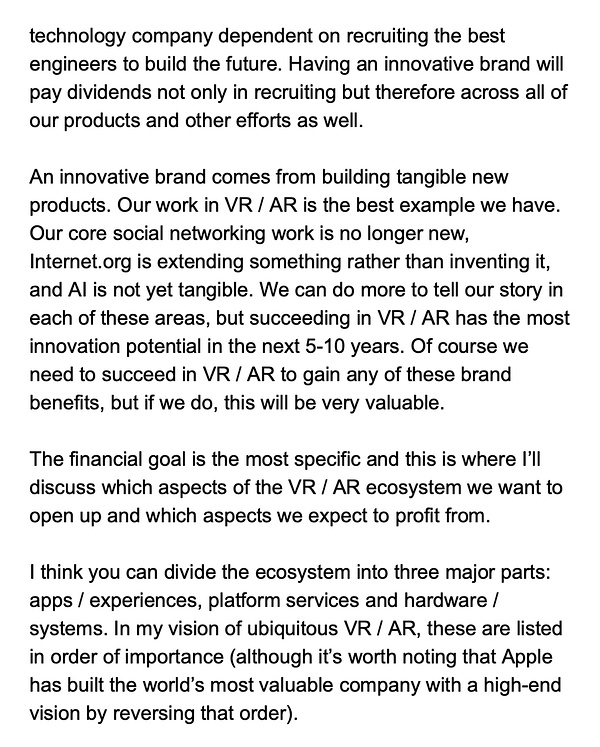Why Apple co-founder Steve Wozniak started a space company
Spoiler: he's not building rockets or sending people to Mars
Welcome to back to Year 2049, the weekly newsletter exploring the technologies, innovations, and ideas shaping our future.
Join the growing community of designers, engineers, entrepreneurs, and policymakers who get it in their inbox every Friday.
Today’s Edition
Story: Why Apple co-founder Steve Wozniak started a space company
Tweets: Mark Zuckerberg’s leaked emails on his AR/VR vision from 2015
Article: ChatGPT and The Enshittening of Knowledge
Video: Shutterstock and its plan to compensate artists for AI-generated art
Woz’s new venture
In 2021, Apple co-founder Steve Wozniak started a new space company: Privateer. And I think they’re building the most valuable asset in the burgeoning space economy.
Along with his co-founders, Dr. Moriba Joh (space environmentalist) and Alex Fielding (ex-Apple engineer), he set his eyes on solving one of the most urgent and growing problems in Earth's orbit.
Debris from dead satellites, old rockets, and other space activities is quickly piling up in Low-Earth orbit (LEO). According to a 2021 report from NASA:
26,000+ pieces of debris are larger than a softball and could destroy a satellite on impact.
500,000+ pieces of debris are the size of marbles big enough to cause damage to spacecraft or satellites.
100 million+ pieces of debris the size of a grain of salt and could puncture a spacesuit.
This debris can travel up to 25,000 km/h (15,700 mph), which explains the outsized impact of even the tiniest bit of junk.
Space agencies and companies haven't done enough to clean up after themselves once their missions are done. NASA's study found that the global compliance rate of removing dead satellites has averaged between 20% to 30%, much lower than the recommended 90%.
The European Space Agency's director sums it up with a powerful analogy:
Imagine how dangerous sailing the high seas would be if all the ships ever lost in history were still drifting on top of the water.
– ESA Director General Jan Woerner, in a press release
The risks of debris in space
We have our own problems on Earth, so why should we care about pieces of junk circling the Earth?
For us on Earth, space junk can interfere with satellites that enable:
Navigation systems
Telecommunications
Weather and climate monitoring
Financial transactions
This also affects missions and activities in space, which are only expected to increase in upcoming years:
Satellites: there are currently 7,000+ active satellites orbiting Earth (and almost 4,000 inactive ones). Companies like Starlink, Amazon, and OneWeb hope to launch thousands of satellites. Starlink alone wants to launch 40,000 satellites to provide global, space-based internet.
Space missions: going to space has become much cheaper, and governments are sending astronauts, expensive rovers, and other spacecraft into space more often.
Cargo: there's an impending gold rush to exploit the Moon's resources and minerals, including helium-3, rare earth elements, and more. This will involve more frequent shipping of precious cargo that governments and companies want to preserve at all costs on its way back to Earth.
Some recent examples of how space debris threatened both earthly and non-earthly activities:
In 2016, a 1mm particle damaged a solar panel on a satellite used for environmental monitoring. The impact was about 100 times its diameter.
The International Space Station regularly performs maneuvers to dodge space debris. Last month, space debris delayed a spacewalk to install new solar panels to power the ISS.
What experts fear the most is a phenomenon known as the Kessler Syndrome. This represents the scenario where there's so much junk in space that it keeps colliding with each other, creating a chain reaction where junk keeps making more junk.

What Privateer is doing
Privateer is creating a "Google Maps" of space debris. Currently, only the 25,000+ pieces of debris larger than a softball are being tracked, with no information on the smaller 100 million+ pieces still zooming around Earth.
Tracking these smaller pieces will be crucial in maintaining the systems we rely on in our daily earthly activities and ensuring the safety and success of our endeavours in space.
Privateer is building one of the most valuable assets of the burgeoning space economy. I say this because the company could potentially solve both sides of the space debris problem:
Avoiding space junk: space companies and agencies launching cargo, satellites, and rockets to space will value this intel to avert collisions or serious accidents.
Cleaning up space junk: Startups like Astroscale and ClearSpace are building dedicated spacecraft to collect and clean up debris in Earth's orbit. Privateer's tool would help deploy their junk collectors more precisely and efficiently, especially for the smaller pieces. Even governments would benefit from this tool to clean up after themselves.
Today, Privateer has a publicly-accessible Wayfinder to track space debris. Some things you can do with it:
Visualize and simulate the movement of satellites (active and inactive), rocket body parts, and other debris.
Filter by specific constellations, such as Starlink's 3,000+ satellites.
View the country of origin for each item.
Track particular pieces of debris, such as the Kosmos-1408 satellite, which was destroyed in an anti-satellite weapon test in 2021 and created lots of junk.
Get a summary of each item's inclination, speed, motion, orbital period, and more.
Privateer hasn't solved the problem yet: The Wayfiner tool only shows the 25,000+ pieces we currently have information on by aggregating data from different sources.
The challenge will be to track the smaller 100 million pieces accurately.
What's next for Privateer
To track those smaller pieces, Privateer plans to launch its own satellites to monitor them. It sounds paradoxical, but it's necessary to track fragments as small as 1mm.
According to a report from Inverse, they also plan on launching additional services:
Resslek, a "conjunction management" service that will inform agencies and companies if satellites are on a collision course.
Satellite-as-a-service, to give companies the ability to rent one of their satellites instead of launching their own.
I’ll keep you updated on Privateer’s progress in future newsletter editions.
Deep dive
If you enjoyed today's story, you’ll love reading these:
The entire global financial system depends on GPS, and it’s shockingly vulnerable to attack (Quartz)
This is the damage that tiny space debris travelling at incredible speeds can do (Quartz)
Previous Year 2049 editions:
Other stuff
Zuck’s VR/AR vision from 2015
As part of the FTC’s antitrust investigation into Meta, Zuck’s 2015 emails detailing his VR/AR ambitions were released. It puts into context Facebook’s rebrand to Meta and its pivot into the metaverse.
ChatGPT and the Enshittening of Knowledge
A must-read article about ChatGPT from Daragh O Brien. I won’t summarize it because everyone should read it fully.
Shutterstock launches AI image generator and will compensate artists
When I wrote last week’s What if… AI tools paid artists? , I wasn’t aware that Shutterstock was planning on implementing a similar model with its new AI tool (thank you to Shane for emailing me and telling me about this).
I made a short video talking about it a few days ago.
How would you rate this week's edition?



















Excellent info. Thanks Fawzi. Seems like everything you do is a Deep Dive... keep it up!